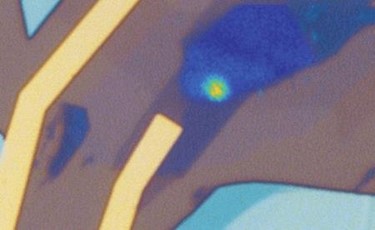Graphene-Layered, All-Electrical Quantum LEDs Emit One Photon At A Time
By Jof Enriquez,
Follow me on Twitter @jofenriq

Researchers at European technology consortium Graphene Flagship have successfully created an all-electrical quantum light emitting diode (LED) with single-photon emission constructed of atomically thin layers of graphene, boron nitride, and transition metal dichalcogenides (TMDs). These quantum LEDs could be used in a wide range of photonics applications for quantum information and communications.
Devices that emit single photons at once typically rely on optical excitation using lasers mounted in large-scale optical set-ups, and require precise alignment of optical components. Only a few have been designed to work using only electrical current to achieve single-photon emission, a key requirement for integrated quantum optoelectronics.
“Ultimately, in a scalable circuit, we need fully integrated devices that we can control by electrical impulses, instead of a laser that focuses on different segments of an integrated circuit. For quantum communication with single photons, and quantum networks between different nodes – for example, to couple qubits – we want to be able to just drive current, and get light out. There are many emitters that are optically excitable, but only a handful are electrically driven,” said Professor Mete Atatüre (Cavendish Laboratory, University of Cambridge, UK), co-author of the research study published in Nature Communications, in a news release.
To build their quantum LED, the researchers stacked together an ultrathin heterostructure made of different materials. An electrical current (less than 1 µA) is injected into the device, tunneling from single layer graphene, through a tunnel barrier of a few layers of boron nitride, and into a mono- or bilayer of a transition metal dichalcogenide (TMD), such as tungsten diselenide (WSe2). In this layer, electrons recombine with holes to emit single photons, reports New Electronics.
Researchers only recently discovered the existence of quantum dots and quantum emitters demonstrating highly localized photoluminescence with single-photon emission characteristics in TMDs. This property, combined with the researchers' newly-devised technique of stacking other layers of materials, offers an advantage over other single-photon emitters for feasible integration into nanophotonic circuits.
"We are just scratching the surface of the many possible applications of devices prepared by combining graphene with other insulating, semiconducting, superconducting or metallic layered materials. In this case, not only have we demonstrated controllable photon sources, but we have also shown that the field of quantum technologies can greatly benefit from layered materials. We hope this will bring synergies between the Graphene Flagship and its researchers, and the recently announced Quantum Technologies Flagship, due to start in the next few years," said Professor Andrea Ferrari (University of Cambridge, UK), Chair of the Graphene Flagship Management Panel, and the Flagship’s science and technology officer.
Graphene Flagship, Europe's largest research initiative, consists of over 150 academic and industrial research groups in 23 countries, who are developing graphene and related layered materials from laboratories into industrial and commercial applications.
